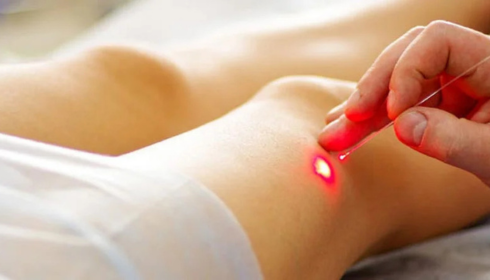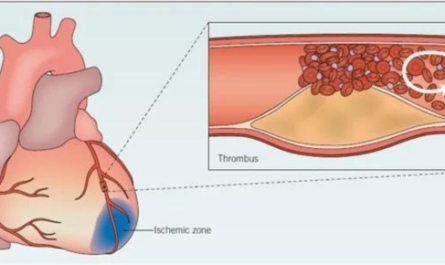
It’s easy to take something as simple as blood flow for granted — until it isn’t simple anymore. Most of us don’t think twice about the way our legs carry us through life, or the subtle work our arteries do every second of every day. But when circulation falters, when pain sneaks in during a walk or swelling lingers long after you’ve kicked off your shoes, suddenly it’s impossible to ignore.
Vascular health may not be the most glamorous topic, but it’s one that affects countless people quietly. For some, it shows up as discomfort in the calves. For others, it’s bulging veins that ache or burn. And for many, it’s the slow realization that what they’ve been brushing off as “just aging” might actually be a sign of something that deserves real medical attention.
Understanding the Silent Strain
One of the most common yet overlooked conditions is peripheral artery disease. It’s sneaky. It doesn’t shout at you with dramatic symptoms right away. Instead, it starts small — maybe you feel a cramp after walking a block or two, or your feet seem colder than they should. Many dismiss it as nothing, until it starts interfering with daily life.
The truth is, peripheral artery disease treatment has advanced far beyond what it used to be. From medications to minimally invasive procedures, doctors now have multiple tools to restore blood flow and improve quality of life. But getting to that point means paying attention early, listening to your body’s warnings, and not brushing off those nagging aches.
Veins That Tell Their Own Story
If arteries are the silent workers, veins are the ones that make themselves visible. Varicose veins can feel like more than just a cosmetic concern. The aching, heaviness, and throbbing they bring aren’t just frustrating — they’re signals that your veins are struggling to do their job.
It’s no wonder people search for varicose vein treatment near me once the discomfort becomes too much. The good news? Treatments today are far less intimidating than the surgical stripping procedures of the past. Options like laser therapy or sclerotherapy can be done in outpatient settings, often with minimal downtime. What used to feel like a major ordeal is now, for many, a straightforward afternoon appointment that delivers real relief.
The Role of Specialised Care
Of course, no online search can replace expertise. That’s where vascular surgeons step in. These are the specialists who see the whole picture — arteries, veins, circulation patterns, and the unique quirks of each patient.
Programs like NTX Vascular Surgery bring that expertise under one roof, combining advanced technology with the personal side of medicine. What makes centers like these stand out isn’t just the procedures they perform, but the way they guide patients from confusion to clarity. It’s not just about fixing a blockage or sealing a faulty vein; it’s about building a plan that helps patients walk, sleep, and live without constant reminders of poor circulation.
More Than Just Medicine
The physical side of vascular conditions is only half the story. The emotional weight can be heavy too. Imagine skipping social events because standing too long makes your legs scream with pain. Or feeling embarrassed to wear shorts because of bulging veins. These things may sound small on paper, but they add up.
That’s why treatment often feels like more than medicine — it feels like freedom. Patients describe the first pain-free walk around the block as liberating, or the relief of sleeping through the night without leg cramps as life-changing. These stories remind us that vascular care isn’t just about numbers on a chart; it’s about reclaiming the everyday moments that make life enjoyable.
What to Expect at a Consultation
For anyone considering a vascular consultation, it’s worth knowing what the first step looks like. Most initial visits involve a review of your medical history, a physical exam, and sometimes non-invasive imaging like ultrasounds to map out how blood is flowing. It’s rarely scary, and often the biggest feeling patients walk away with is relief — relief that someone finally listened, explained things clearly, and outlined options instead of leaving them guessing.
The consultation also tends to set expectations. Doctors explain what lifestyle changes can help, which treatments might be appropriate, and what results look like in real-world terms. No false promises, no one-size-fits-all plans. Just clarity.
The Practical Realities: Cost and Coverage
No article like this can avoid mentioning the financial side. Treatments vary in cost depending on the severity of the condition and the type of procedure needed. Insurance coverage is often tied to whether a treatment is deemed medically necessary or “cosmetic.” That’s where having the right medical team matters — they can help advocate, document symptoms, and push for coverage when treatment is about health, not vanity.
Even when costs feel daunting, many clinics offer financing plans or staged approaches, making treatment more accessible than people often assume.
Prevention and Long-Term Care
Vascular health isn’t a one-and-done situation. Even after treatment, maintaining good circulation means ongoing attention. Regular exercise, a balanced diet, staying hydrated, and not smoking all play critical roles. Doctors often stress that the best results come when medical interventions are paired with lifestyle adjustments.
It’s less about perfection and more about consistency. Walking a little more, making small tweaks to meals, and managing stress can all help keep blood flowing freely long after a procedure is done.
Listening to Your Body
The most important lesson in all of this? Don’t ignore your body’s signals. Cramping, swelling, numbness, or visible veins aren’t just inconveniences. They’re messages. And those messages often arrive early enough for meaningful interventions — if you’re willing to listen.
Too many people wait until the pain is unbearable or complications arise. But the earlier you seek guidance, the wider the range of treatment options, and the easier the road to recovery often is.
A Closing Thought
Vascular health doesn’t get much attention until it forces its way into the conversation. But maybe it deserves a little more space in how we think about wellness. Because when circulation is strong, life feels effortless. And when it falters, everything — walking, sleeping, even standing in line at the grocery store — becomes a reminder of what’s not working.
If you’ve been putting off seeking help, consider this a gentle nudge. Schedule that consultation, ask the questions, explore your options. You don’t have to live with pain, swelling, or embarrassment as the default. Treatment is out there, and it’s more approachable than ever.
And sometimes, the smallest step — making that first appointment — becomes the biggest move toward feeling like yourself again.



